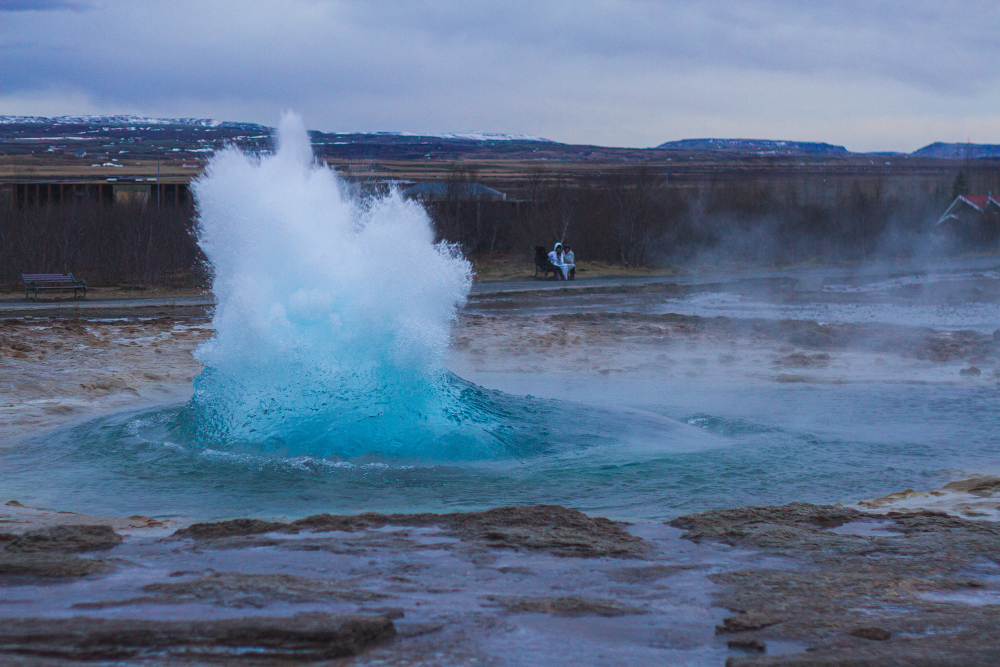4.3.2 Lecture Notes Thermal Energy Sources
Course subject(s)
4. Intelligent Control and Integration of Heating in the Energy Systems

This image is from freepik
This lecture introduces different thermal energy sources and the different characteristics which are important for integrating them into an energy system. The following topics will be discussed:
- The key characteristics of the thermal energy sources
- The different thermal energy sources
The different thermal energy sources
The first considered thermal energy source is geothermal. Geothermal energy is the extraction of heat from the ground. Typically, two wells are drilled several hundred meters into the ground. Hot water is pumped to the surface, the heat is extracted, and the cooled water is then returned to the ground.
To install a geothermal system deep drilling is needed, which can be costly, and high flow rates are required in the subsurface. The subsurface properties in the local area determine different aspects, such as the required depth, the temperature available, and the flow rate that can achieved. These aspects make these projects challenging but can supply a substantial amount of energy in one go.
The second thermal energy source is waste heat coming from data centres. The data centres drive the internet and are used by companies for data analysis and simulation. When they are running, the computers become hot and require cooling. This heat can be extracted and be used for other purposes. The temperature of the heat is moderate, which requires that the heat needs to be used relatively close.
Another type of thermal energy comes from shallow geothermal energy. The working principle is circulating a fluid through closed pipes that are placed in a shallow subsurface. These pipes are normally around a depth of 100-meter. The temperature at this depth is strongly dependent on the average annual temperature. The advantage of shallow geothermal energy is that it uses a relatively stable temperature at a few meters below the surface. A heat pump is required for both heating and cooling.
Air source heat pumps are similar to shallow geothermal energy. A fan is used to move air through a heat exchanger to change the temperature of a fluid. This fluid is then pumped to a heat pump, where the temperature is increased to the desired temperature. This process can also be reversed, such that it provides cooling. Heat pumps are required for the use of both heating and cooling. Air source heat pumps are less efficient than shallow geothermal energy. However, they are cheaper to install.
Solar collectors and photovoltaic thermal collectors turn radiation from the sun into heat. This can be combined with the production of electricity. This can make the PV systems more efficient, since they can be cooled, and the heat can be extracted. Most of this heat is available when the sun is directly shining at the panel, which is typically in the summer.
The last considered thermal energy source is aqua thermal energy. This energy source uses surface water to extract heat from. It is similar to shallow geothermal and air source systems, but it can be used more easily on larger scales. Surface water, such as lakes, rivers, or a canal, needs to be available and a heat pump is required. Since the temperature is low, it needs to be used close to the energy sources.
The key characteristics of thermal energy sources
The following characteristics are considered for thermal energy sources:
- The scale of energy supply: This refers to the amount of energy that can be delivered by a system or the number of buildings that can be supplied. This can be characterized as “large”, where large-scale heat distribution is required, or “small”, where only limited distribution is required.
- The heat quality/ temperature: Heat with a higher temperature is more energy dense, can be transported over longer distances, and can be used for more purposes. On the other hand, heat with a lower temperature is more easily available and is cheaper to obtain.
- The ability to provide only heating or both heating and cooling: Lower temperature sources can often offer both heating and cooling. However, this does require a heat pump and electricity for the heat pump to run.
- The availability of the thermal energy: Some sources are constant over a whole year, which are baseload supplies, and other sources have a seasonal variability, since they dependent on the temperature outside.
The discussed thermal energy sources can be compared based on their key characteristics. The table shown below presents an overview of the characteristics of each energy source.
| Source | Geothermal | Data centers | Shallow geothermal | Air source heat pump | Solar colllectors | Aquathermal |
|---|---|---|---|---|---|---|
| Scale | Large | Medium | Small | Small | Small | Medium |
| Quality | High | Moderate | Low | Low | Low | Low |
| Heating/cooling | Heating only | Heating only | Both | Both | Heating only | Both |
| Availability | Baseload | Baseload | Variable | Variable | Variable | Variable |
Conclusion
This lecture presented six different energy sources for thermal energy. Also, four key characteristics are discussed, which can be used to compare the different energy sources. Finally, an overview of the characteristics for different thermal energy sources was presented.

Technology of Intelligent and Integrated Energy Systems by TU Delft OpenCourseWare is licensed under a Creative Commons Attribution-NonCommercial-ShareAlike 4.0 International License.
Based on a work at https://online-learning.tudelft.nl/courses/technology-of-intelligent-and-integrated-energy-systems/



